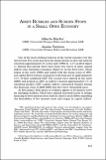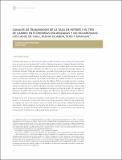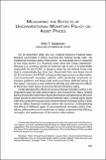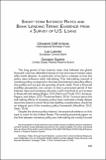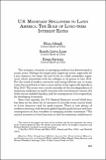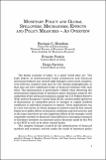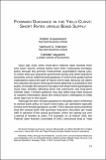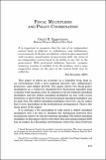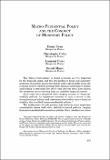Buscar
Mostrando ítems 1-10 de 25
Asset bubbles and sudden stops in a small open economy
One of the most striking features of the world economy over the last twenty-five years has been the sharp decline in the real interest rate from approximately 4% in the early 1990s to -1.5% in 2013 (figure 1). During this period there have been two waves of large capital inflows into emerging economies ...
Canales de transmisión de la tasa de interés y el tipo de cambio en economías dolarizadas y no dolarizadas: los casos de Chile, Nueva Zelanda, Perú y Uruguay
Este trabajo realiza un estudio comparativo de dos de los canales de transmisión de la política monetaria —la tasa de interés y el del tipo de cambio— entre dos economías que operan bajo un sistema establecido de metas de inflación, Chile y Nueva Zelanda, y dos economías cuyo régimen de metas de ...
The leverage cycle default and foreclosure
At least since the time of Irving Fisher economists as well as the general public have regarded the interest rate as the most important variable in the economy. But in times of crisis collateral rates (margins or leverage equivalently) are far more important. Despite the cries of newspapers to lower ...
Measuring the effects of unconventional monetary policy on asset prices
On 16 December 2008 the U.S. Federal Reserve’s Federal Open Market Committee (FOMC) lowered the federal funds rate—its traditional monetary policy instrument—to essentially zero in response to the most severe U.S. financial crisis since the Great Depression. Because U.S. currency carries an interest ...
Short-term interest rates and bank lending terms: evidence from a survey of U.S. loans
The long period of low interest rates that followed the global financial crisis has rekindled interest in how short-term interest rates affect bank behavior. In particular it has led to a debate on how low policy rates influence bank risk-taking. This risk-taking channel of monetary policy corresponds ...
U.S. monetary spillovers to Latin America: the role of long-term interest rates
The economic situation in emerging markets has deteriorated in recent years. Perhaps the single most important event especially for Latin America has been the end of the so called commodity supercycle which intensified with the collapse in oil prices in late 2014. But the trend of weaker currencies ...
Monetary policy and global spillovers: mechanisms effects and policy measures: an overview
The global economy of today 'is a small world after all.' The high degree of international trade integration and financial interconnectedness has created tight linkages across most countries even between countries that may be very distant geographically or that may not have significant trade or financial ...
Forward guidance in hte yield curve: short rates versis bond supply
Since late 2008 when short-term interest rates reached their zero lower bound central banks have been conducting monetary policy through two primary instruments: quantitative easing (QE) in which they buy long-term government bonds and other long-term securities and so-called forward guidance in which ...
Fiscal multipliers and policy coordination
This paper is about an economy in a liquidity trap that is an environment with a zero nominal interest rate deflationary pressures and subpar growth. The paper shows two fiscal policy multipliers in a relatively standard New Keynesian liquidity trap economy with taxation costs. It computes real ...
Macro-prudential policy and the conduct of monetary policy
The 'Great Contraction' in global economic activity triggered by the financial crisis and the extraordinary fiscal and monetary measures that public authorities had to undertake in order to put the economy back on track by putting public finances under heavy strains and leading to extremely low ...

